By Alyssa Hamm
Programmatic technology is confusing! DSPs have so many amazing features, but most of them are extremely technical and used only by the media buyer. Wouldn’t it be nice to be able to speak fluently about those technical aspects of the DSP, and use that skill to amp up your sales pitch? Well…now you can!
Read on for a technical description of each feature, as well as a sales pitch that explains the benefits—in language that any advertiser can understand.
Group Budget Optimization (GBO)
Technical Definition: GBO is a feature that automatically shifts budget between tactics and campaigns, based on performance.
Sales Pitch: When you buy audience extension via programmatic, you’re buying power and efficiency fueled by automation. Our tech automatically assesses the ways you’re targeting your audience, then automatically spends your budget on the targeting methods that are driving the best results.
Machine Learning Optimization (MLO) and Algorithmic Optimization (AO)
Technical Definition: MLO and AO are forms of artificial intelligence that help with the optimization of campaigns.
- AO is reactive, and automatically turns off sites and placements that are not achieving the campaign goal or Key Performance Indicator (KPI).
- MLO is proactive, and creates a brand-specific algorithm that will bid on inventory that has a high chance of achieving your campaign goal or KPI. The algorithm can be used across the brand for any campaign after it is created. Note that MLO needs a learning period to function: your campaigns must first accumulate enough data to create the algorithm.
Sales Pitch: Once we understand your campaign goals and KPIs, MLO and AO do the hard work of determining which sites and placements will best drive success. Automating this process removes the risk of human error, giving you full confidence that your budget is being used to its fullest potential.
Private Marketplaces (PMPs)
Technical Definition: Private marketplaces (PMPs) allow the buyer to bid on specific types of inventory, premium placements, or first-party data within a certain deal. PMPs limit the number of buyers who have access to the deal, and often house inventory that is not available in the open exchange. Most PMP deals have a floor rate, which should be considered when determining your bidding strategy with respect to the goal CPM.
Sales Pitch: Having access to a PMP is like getting invited to an exclusive, invite-only event. They provide access to private deals with specialized inventory and data for your campaign. It doesn’t matter if you’re executing audio, native, or connected TV—whatever the case, we can find ways to add premium placements to your media plan.
Bid Shading
Technical Definition: When bid shading is enabled, an algorithm analyzes historical bid data and estimates the lowest possible bid within your budget that’s sure to win. This essentially shaves any fat off the bid, resulting in serious cost savings—especially on higher CPM placements like audio and Connected TV (CTV).
Sales Pitch: We know that CTV and audio placements are popular and more expensive than their display counterparts. Our algorithm automatically finds cost savings when executing media, allowing for more media to be purchased with the same budget.
Contextual Segment Reports
Technical Definition: When running a contextual or run of network tactic, the contextual segment report can be pulled to see which contextual segments are performing, which can be turned off, and which segments you are not using but could add for additional performance on the campaign. The report shows all available segments and their performance with regards to your campaign, allowing you to find segments that may not have fit your original target (in the case of a contextual campaign) and to add targeting to a campaign after you have cast a wide net (in the case of a run of network campaign).
Sales Pitch: We have access to reports that show us how we can optimize our targeting after the start of a campaign. This allows us to find contextual data segments that are performing, even if they are not enabled on the campaign. In turn, this gives you the confidence to cast a wide net and let the technology show you where performance is located. Plus, you get the ability to add additional audiences (beyond your initial targets) after the campaign has started.
Transunion Audience Platform (TAP)
Technical Definition: TAP is a Basis third-party partner that allows an advertiser to place a pixel on their site, then access site-specific audience information as well as the ability to tap into look-alike modeling. The audience overview is free and available to you via a TAP portal, while look-alike modeling is available on your DSP campaigns for a small CPM.
Sales Pitch: Do you have good insight into who is visiting your site? Do you wish you could target people who look like the people who are already on your site? I can help you do both! All you have to do is place a pixel on your site and we can show you audience breakdowns and provide a look-a-like audience to use in your campaign.
Need something else decoded? Let your AL know, and we will get it added to this list!


